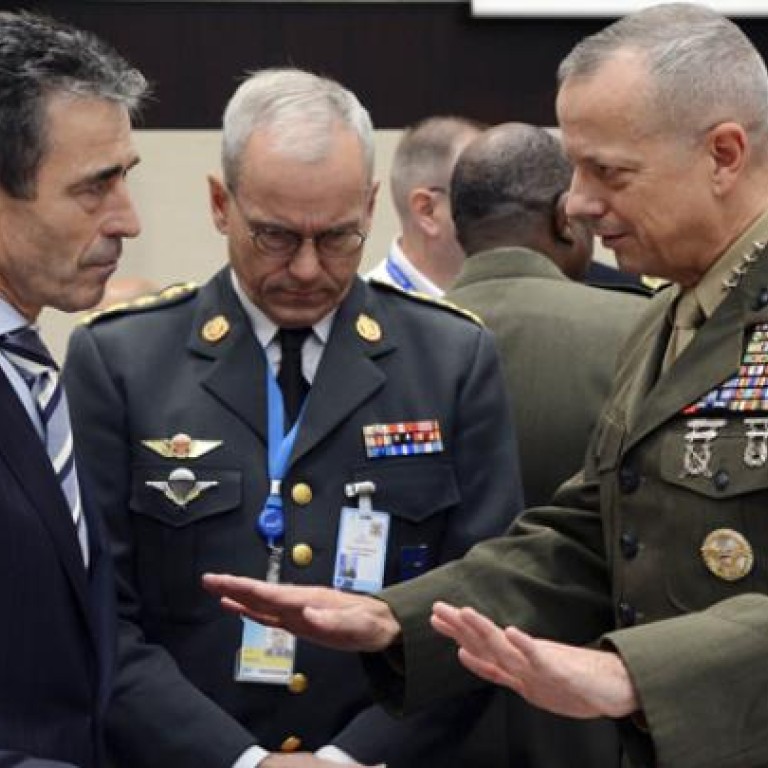
Nato charts path out of Afghanistan, 'post-combat' role
Nato defence ministers looked to the future in Afghanistan on Wednesday, planning for their mission after combat forces are withdrawn in 2014 in the knowledge that the transition is fraught with danger.
Nato head Anders Fogh Rasmussen stressed that the post-2014 role of training and assistance was “not a combat mission”, the aim being to ensure the stable future that the allies and Afghans both wanted for the country.
As planning now gets underway, Nato forces will be drawn down and redeployed, a normal process which is not about “speeding up” the withdrawal, Rasmussen said.
The transition has come under close scrutiny this year as the handover of security to Afghan forces has seen a spate of “insider attacks” – renegade local troops killing more than 50 of their unsuspecting Nato comrades.
Rasmussen has recognised the seriousness of the problem and insists Nato will stay the course but one diplomatic source told reporters that such attacks stoked concerns about the overall mission.
Nato members have “concerns about the safety of their own soldiers but also about the potential impact on the overall effort,” the source said.
The Taliban had jumped on the attacks “as something with strategic potential. This is not something that is yet a strategic threat, it has the potential to be that,” said the diplomatic source, who asked not to be identified.
“More important right now is how we respond to it, what measures are taken.”
German Defence Minister Thomas de Maiziere voiced the general unease.
“The attacks coming out of the Afghan security forces are outrageous and worrying ... we will tell the Afghan defence minister today to do everything he can to prevent that,” de Maiziere said as he went into the meeting on Wednesday.
At the same time, Nato allies would stick together and to the plan, he said.
“Together in, together out means for us that we withdraw the troops up to 2014 in a coordinated and responsible way,” de Maiziere said.
The diplomatic source highlighted two key problems for the alliance as it pulls out.
On the one hand he said only slow progress has been made in developing local governance in Afghanistan.
Meanwhile the Taliban will retreat to remote Pakistan areas, not fully controlled by the government, in the winter months to rearm and build supplies, making the insurgent problem even more difficult to control.
Ministers began the second day of their meeting on Wednesday with a review of Kosovo where a Nato-led peacekeeping effort is now in its 13th year while there is little sign that the dispute over the country’s self-proclaimed independence from Serbia can be resolved.
On Tuesday, the main theme was how to maintain military spending at a time when governments are under pressure on all sides to cut budgets.
Nato adopted a “Smart Defence” policy at a May summit in Chicago, aiming to promote increased cooperation and burden sharing to offset reduced funding.
The United States accounts for the bulk of Nato defence spending and its portion has increased markedly in the last decade, a sore point for Washington in trying to get its allies to do more.
“Let me be clear: we need smart spending and, even more, we need sufficient spending,” Rasmussen said on Tuesday.
